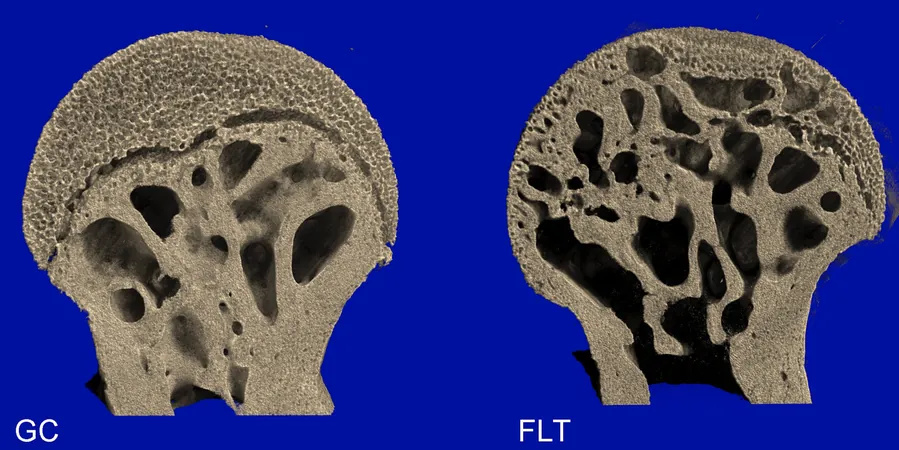
Revolutionary Discovery: Could Giant Prototaxites Be an Entirely New Life Form?
2025-03-27
Author: Ming
A groundbreaking revelation about an ancient organism known as Prototaxites might change our understanding of the tree of life as we know it. Once believed to be the first giant organism to inhabit land, recent studies suggest that Prototaxites could actually represent a completely unknown branch of life on Earth.
Dating back roughly 420 to 375 million years ago during the Devonian period, Prototaxites were extraordinary in size, with some species estimated to reach towering heights of up to 26 feet (about 8 meters) and widths of up to 3 feet (1 meter). Initially classified as everything from trees to fungi, the mystery surrounding their biological classification has perplexed scientists for nearly two centuries since the first fossil discovery in 1843.
In 2007, chemical analyses indicated that Prototaxites may have been a giant fungus, but new research published recently on the preprint server bioRxiv throws this notion into question. The study, although yet to be peer-reviewed, posits that Prototaxites might not belong to any known biological kingdom: fungi, plants, animals, or protists.
As it stands, all life on Earth falls within three domains: bacteria, archaea, and eukarya. The latter encompasses multicellular organisms categorized under four kingdoms: fungi, animals, plants, and protists. Prior analyses suggested that Prototaxites consumed decaying matter much like modern fungi, diverging from plants that synthesize food through photosynthesis.
However, researchers examined fossilized specimens, including one named Prototaxites taiti found in the beautifully preserved Rhynie chert formation in Scotland. While this particular specimen is significantly smaller than its towering relatives, standing only a few inches tall, it stands as the largest Prototaxites found within this rich fossil record.
Upon scrutinizing the internal structure of Prototaxites taiti, researchers discovered that its interior consisted of a network of tubes reminiscent of fungal anatomy, but branched and connected in ways unseen in modern fungi. This revelation led the scientists to conclude that both the morphology and chemical composition of Prototaxites are distinct from known fungi.
Notably, true fungi from the same geological period found in Rhynie chert provided a comparative framework. Chemical analysis revealed that Prototaxites did not exhibit chitin, the primary component of fungal cell walls, but instead contained substances similar to lignin, commonly found in the structure of plants.
The findings led researchers to suggest that Prototaxites may indeed belong to a completely unrecognized lineage of extinct terrestrial organisms. “The anatomy of Prototaxites taiti is fundamentally distinct from all known extant or extinct fungi,” they stated, proposing that it may align with an entirely new group of eukaryotes.
Prominent biologist Kevin Boyce, who once led the hypothesis that Prototaxites could be a giant fungus, expressed his agreement with the latest findings. “We currently lack a place for Prototaxites within the fungal phylogeny,” Boyce noted. “Whether it is classified as a fungus or something else entirely, it showcases an unique evolutionary experiment in multicellularity that no longer exists today.”
The quest for understanding Prototaxites is far from over. As research advances, scientists are determined to unravel the mysteries of this ancient giant, its ecological role, and the ultimate factors leading to its extinction millions of years ago. Will we soon be witnessing the unveiling of a new branch of life that once thrived alongside early complex organisms? Stay tuned as this fascinating narrative unfolds!




 Brasil (PT)
Brasil (PT)
 Canada (EN)
Canada (EN)
 Chile (ES)
Chile (ES)
 Česko (CS)
Česko (CS)
 대한민국 (KO)
대한민국 (KO)
 España (ES)
España (ES)
 France (FR)
France (FR)
 Hong Kong (EN)
Hong Kong (EN)
 Italia (IT)
Italia (IT)
 日本 (JA)
日本 (JA)
 Magyarország (HU)
Magyarország (HU)
 Norge (NO)
Norge (NO)
 Polska (PL)
Polska (PL)
 Schweiz (DE)
Schweiz (DE)
 Singapore (EN)
Singapore (EN)
 Sverige (SV)
Sverige (SV)
 Suomi (FI)
Suomi (FI)
 Türkiye (TR)
Türkiye (TR)
 الإمارات العربية المتحدة (AR)
الإمارات العربية المتحدة (AR)